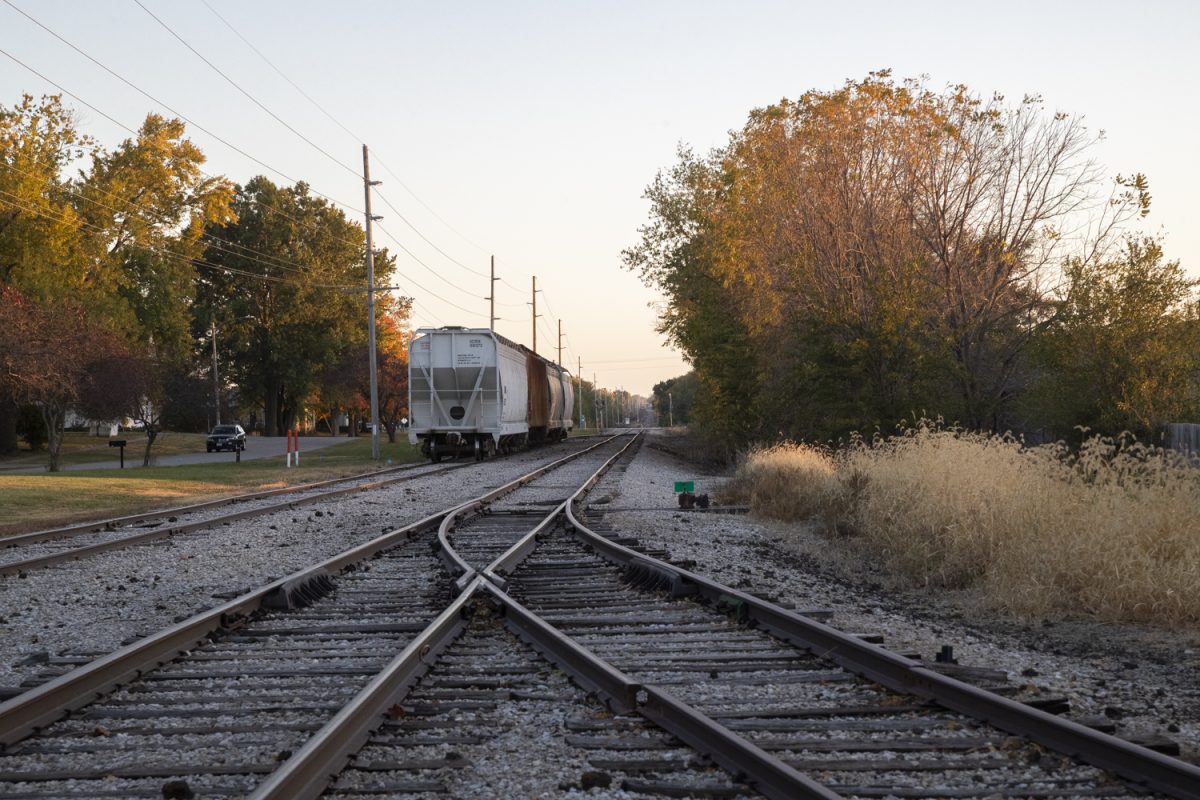As discussions about transit in the Greater Iowa City area remain constant, city officials continue conceptualizing ways to improve public transportation.
One such concept revolves around the century-old Cedar Rapids and Iowa City Rail Line, or CRANDIC, to quickly move commuters between Iowa City and North Liberty.
The CRANDIC currently runs freight along its length north of the Iowa City area to Cedar Rapids. At one point, it was used as a passenger line, a function that is now defunct, though potentially not for much longer.
Discussions about repurposing the CRANDIC have gone on for some time, with substantial back and forth between city officials on how specifically to use the section of the rail connecting Iowa City and North Liberty.
However, after a trip to Pennsylvania in August, city councilors and business managers in the area are increasingly inclined towards a pop-up metro option using electric railcars. Though, the project seems to be somewhat in limbo.
During the spring, a representative of Pop Up Metro came and gave presentations to city officials in North Liberty and Iowa City.
Pop Up Metro is a passenger rail system organized by the Railroad Development Corporation, a railroad infrastructure investment company. It is designed to allow for a quick setup of an electric-based passenger rail car system and is just recently beginning to spread out.
In August, representatives of Iowa City, Coralville, North Liberty, and Johnson County overall traveled to Pennsylvania to test out the Pop Up Metro system. This experience, North Liberty City Councilor Erek Sittig said, was a success.
“They have a demonstration track out there [in Pennsylvania] that we were able to ride,” he said. “It was proof of concept, where we can see that it’s real.”
Sittig says the work now depends on the different government entities involved to reach a consensus, which comes as a result of various studies performed in the last decade to identify the most efficient use of the line.
Sittig said studies were performed either to use the rail line as a commuter railway, which would require hundreds of millions of dollars of maintenance or a rapid-bus system. The rapid bus system would see the railbed paved so that a bus line could run atop it with the same navigation capacity of a train but without the track.
Sittig said the trip to see the Pop Up Metro unified some of the varying opinions on using the CRANDIC line. The Pop Up Metro would not require immediate upgrades to the existing infrastructure, but a regular passenger line or rapid bus system would, he said.
The Pop Up Metro could be installed in 2025 as a quick early test to gauge community interest in a permanent transit upgrade to the existing line.
RELATED: Iowa City purchases empty lots to construct affordable housing units
Senior Developer of Community Development at Greater Iowa City Inc. Cady Gerlach said the CRANDIC line through North Liberty and Iowa City could be an incredibly efficient addition to public transportation.
“The CRANDIC is one of the most perfectly positioned lines in all of short-line passenger rails,” she said. “It’s very rare you’d find such a perfectly placed line. It already exists, but it’s just a matter of bringing it back.”
Gerlach said the CRANDIC line, no matter what form it takes, would create economic opportunity in Iowa City and the ever-expanding city of North Liberty.
“Walkable environments, public transit, and specific development allow for economic development. Naturally, development will grow from where people are and want to be. It will help meet climate action goals and help move about in ways they choose to. It provides another way of moving around our community.”
Some concern, however, has come from the division of Travero, a rail transit company in Cedar Rapids that owns the CRANDIC line.
Travero’s Director of Business Development Jeff Woods said that the CRANDIC no longer serves freight customers in the Greater Iowa City area. However, that portion of the line is still used for railcar storage. Woods said this aspect of their business remains incredibly valuable.
Initially, Travero indicated little interest in the commuter rail system primarily because it would require additional capital investment to continue to manage its car storage, a critical asset in its business, Woods said.
“We’d have to ask, ‘Where else do we need to replace assets to allow for the commuter rail?’” he said.
Woods said to entertain the CRANDIC commuter line project in the long run, additional trackage would need to be built elsewhere. However, he said that Travero would accept this if it was in the interest of community stakeholders.
“If the stakeholders want to look at that, and as long as it’s good for the community, we’ll look at anything down there,” Woods said.



